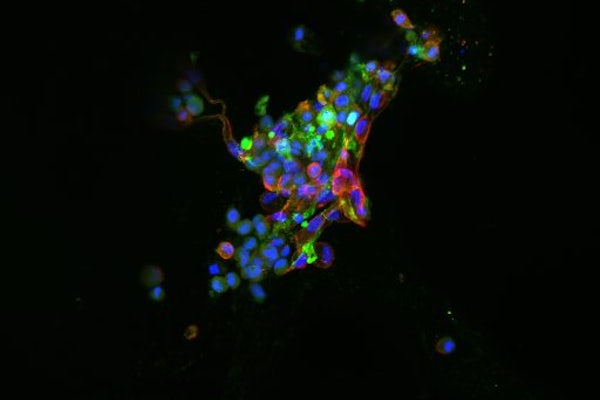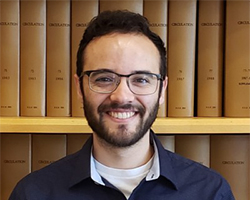Special delivery
The Setton lab leads interdisciplinary team researching potential treatments for intervertebral disc disease

Intervertebral discs provide load support and motion between vertebrae in the spine, but when they start to break down and compress due to aging, disease or injury, a person experiences significant pain and reduced mobility. An interdisciplinary team of researchers at Washington University in St. Louis found a way to deliver new cells to the cushioning material in intervertebral discs that may restore their height, which could reduce pain and improve mobility.
Lori Setton, the Lucy & Stanley Lopata Distinguished Professor of Biomedical Engineering and chair of the Department of Biomedical Engineering in the McKelvey School of Engineering, led a team of biomedical engineering researchers in the McKelvey School of Engineering and researchers from the Department of Orthopaedic Surgery in the School of Medicine to develop a hydrogel modified with peptides that control cell attachment and cell fate. This “bioactive” hydrogel is designed to mimic the hydration of the nucleus pulposus (NP), the jelly-like substance inside the vertebral discs, and is biocompatible for cell delivery and support of cell survival. In addition to delivering cells, the hydrogel is also designed to present signals to the delivered intervertebral disc cells that support matrix synthesis.
In research published in Acta BioMaterialia July 6, 2021, first author Marcos Barcellona, who earned a both a master’s and a doctorate in biomedical engineering at WashU and is now a postdoctoral fellow at Trinity College Dublin, and the team found that encapsulating adult degenerative human NP cells in a hydrogel with two distinct peptides promoted cell viability and increased biosynthetic activity in vitro. Next, they found in a rat model that delivering the biomaterial with rat cells to the degenerated intervertebral discs helped to retain NP cells and support expression of the NP-specific proteins. In addition, it improved the disc height compared for rats with intervertebral disc degeneration.
“My lab has spent decades studying the mechanical and physical environment of NP cells in health and degeneration, and we are beginning to understand how peptides signal to these cells to support biosynthesis,” Setton said. “Using biomaterials that mimic tissue hydration along with specific peptide functionalization may allow cells to survive and regenerate and provide meaningful outcomes in treating disc degeneration that could be translated to the clinic.”
Barcellona MN, Speer JE, Jin L, Patil D, Gupta M, Buchowski J, Setton, LA. Bioactive in situ crosslinkable polymer-peptide hydrogel for cell delivery to the intervertebral disc in a rate model. Acta BioMaterialia, July 6, 2021, https://doi.org/10.1016/j.actbio.2021.06.045
Funding for this research was provided by the National Science Foundation (DGE-1745038) National Institutes of Health (AR069588, AR077678m AR070975), and the Olin Fellowship Foundation of Washington University in St. Louis.





